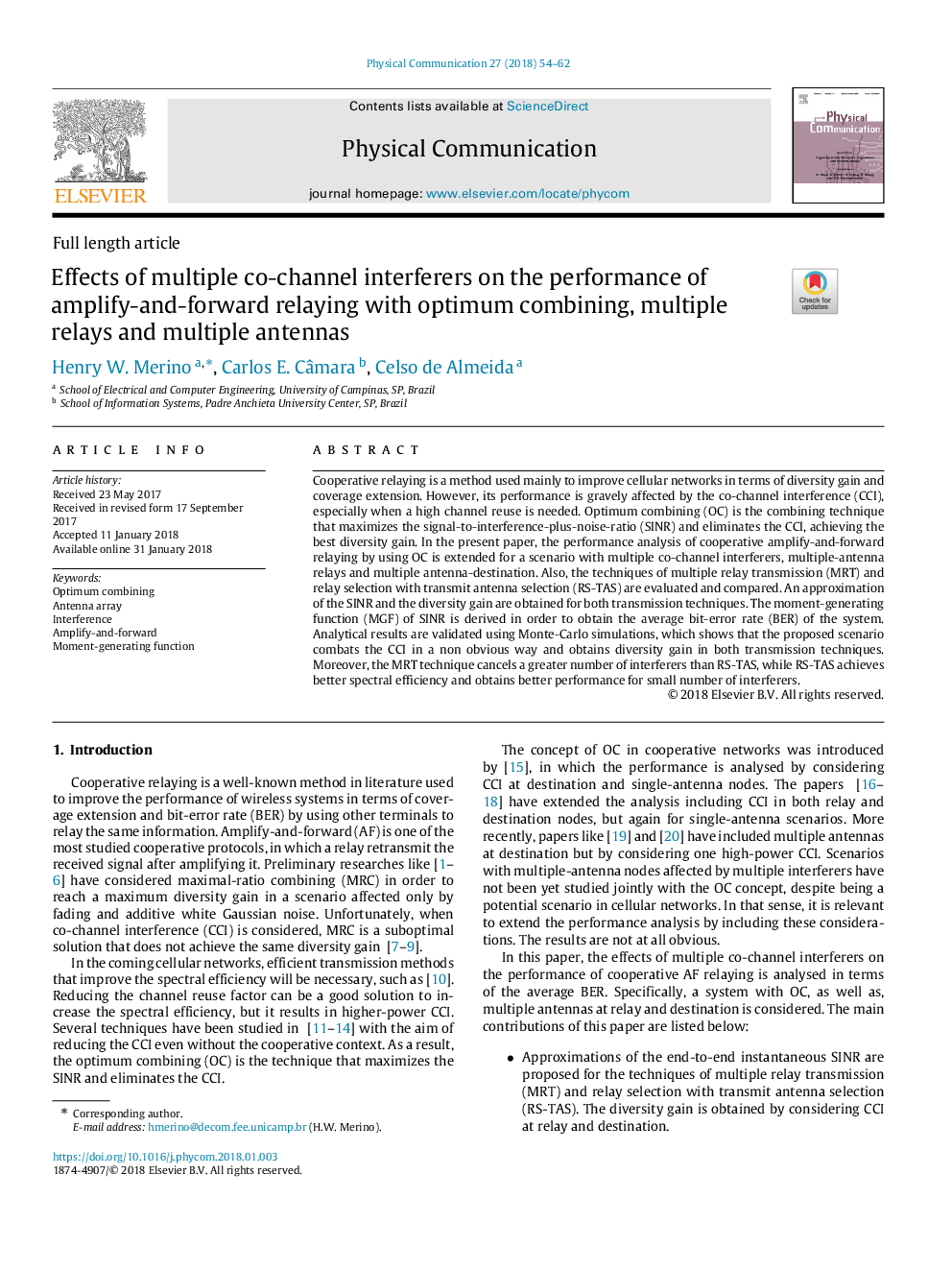| Article ID | Journal | Published Year | Pages | File Type |
|---|---|---|---|---|
| 6889093 | Physical Communication | 2018 | 9 Pages |
Abstract
Cooperative relaying is a method used mainly to improve cellular networks in terms of diversity gain and coverage extension. However, its performance is gravely affected by the co-channel interference (CCI), especially when a high channel reuse is needed. Optimum combining (OC) is the combining technique that maximizes the signal-to-interference-plus-noise-ratio (SINR) and eliminates the CCI, achieving the best diversity gain. In the present paper, the performance analysis of cooperative amplify-and-forward relaying by using OC is extended for a scenario with multiple co-channel interferers, multiple-antenna relays and multiple antenna-destination. Also, the techniques of multiple relay transmission (MRT) and relay selection with transmit antenna selection (RS-TAS) are evaluated and compared. An approximation of the SINR and the diversity gain are obtained for both transmission techniques. The moment-generating function (MGF) of SINR is derived in order to obtain the average bit-error rate (BER) of the system. Analytical results are validated using Monte-Carlo simulations, which shows that the proposed scenario combats the CCI in a non obvious way and obtains diversity gain in both transmission techniques. Moreover, the MRT technique cancels a greater number of interferers than RS-TAS, while RS-TAS achieves better spectral efficiency and obtains better performance for small number of interferers.
Related Topics
Physical Sciences and Engineering
Computer Science
Computer Networks and Communications
Authors
Henry W. Merino, Carlos E. Câmara, Celso de Almeida,
